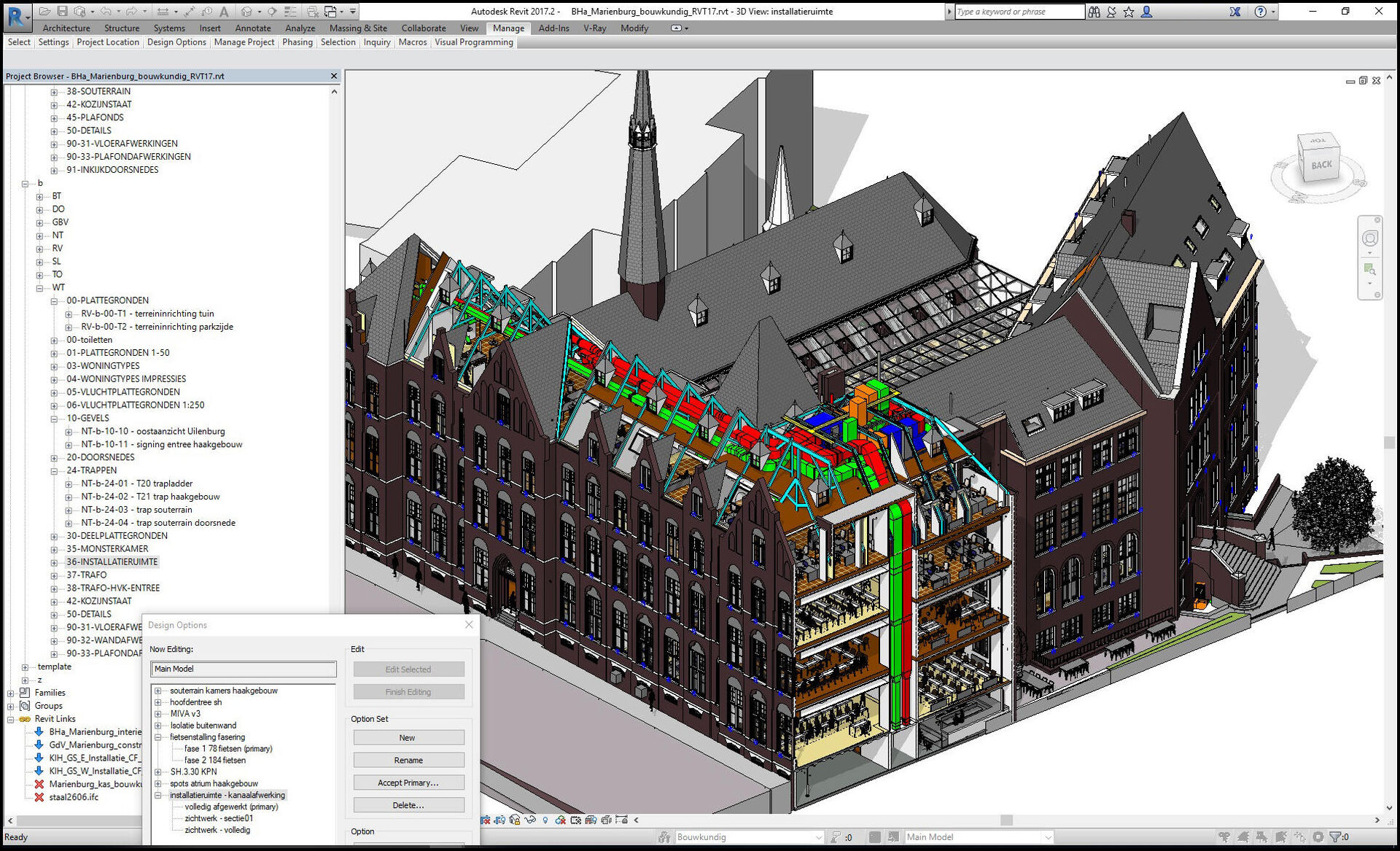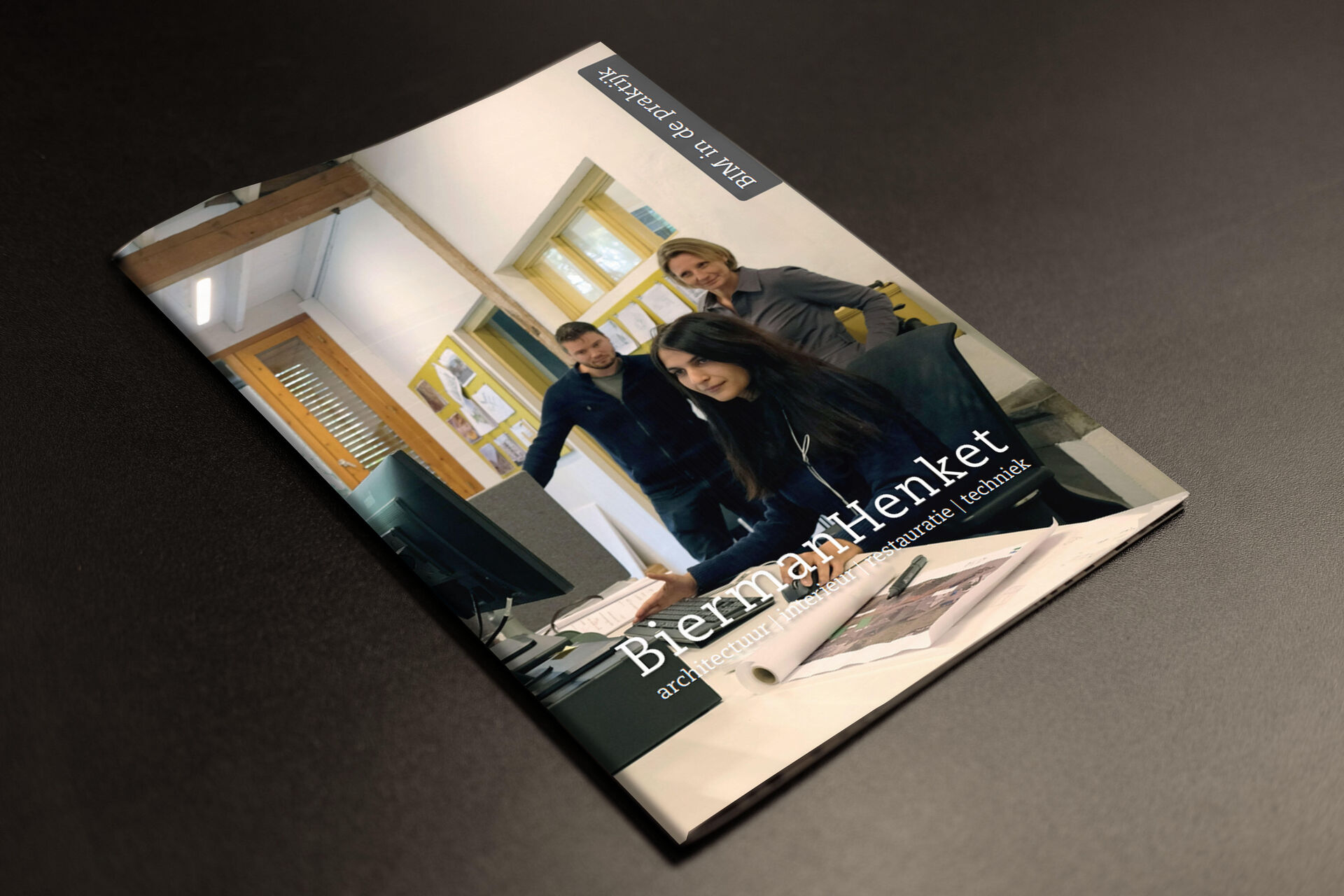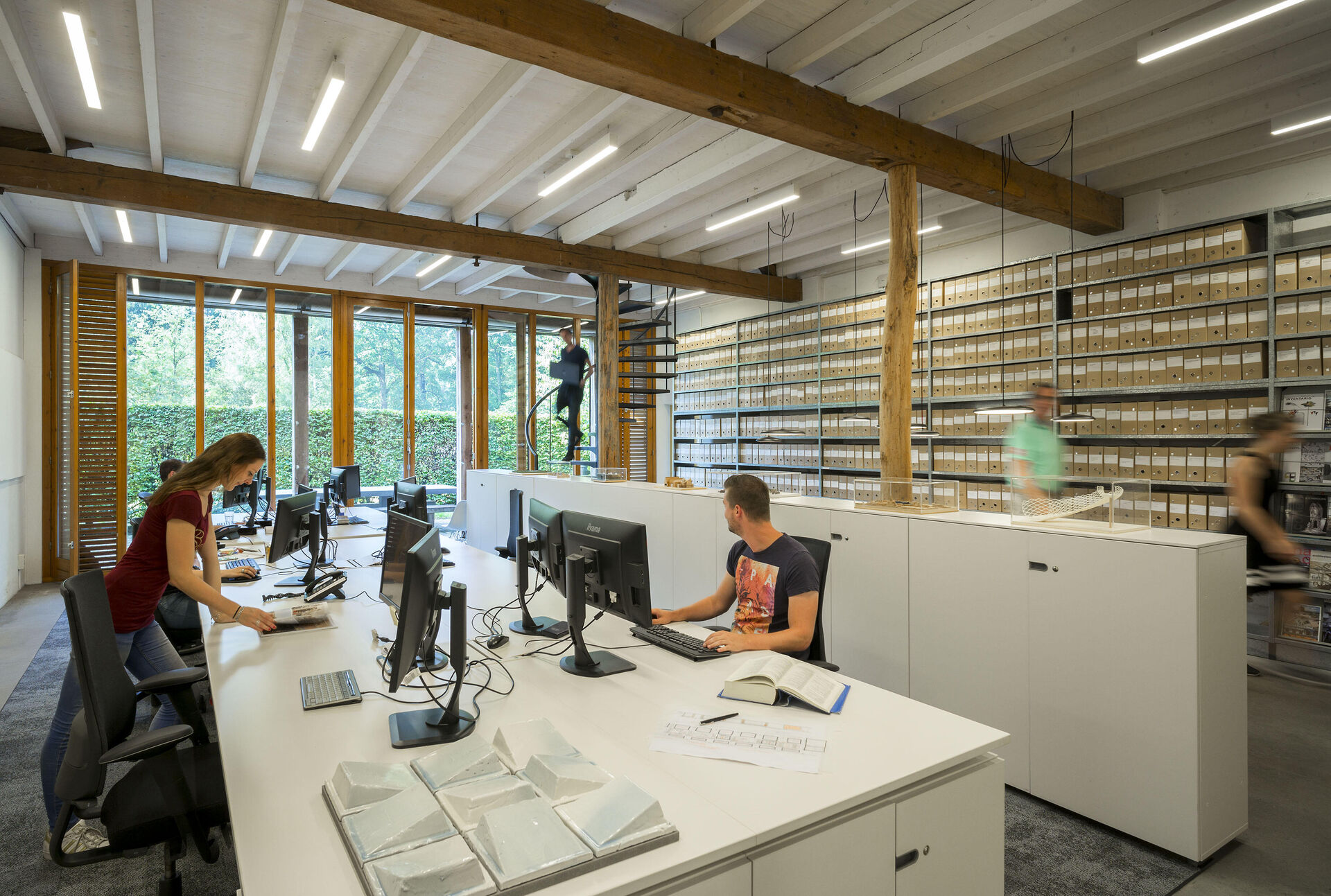Om de integrale afstemming te versterken werkt BiermanHenket haar projecten uit in een Bouwwerk Informatie Model (BIM). Voor elk project wordt, in samenspraak met opdrachtgever en projectpartners, afgestemd welke informatie in de ontwerp-, bouw en/of onderhoudsfase benodigd is. Hiervoor wordt de landelijke BIM basis ILS standaard als uitgangspunt genomen.
Om de kwaliteiten van BIM optimaal te benutten richten we ons op drie kernwaarden:
1. Het maken van een digitaal prototype van het gebouw.
2. Het centraliseren van informatie.
3. Het behoud van informatie in de tijd.
BiermanHenket werkt continue aan de verbetering van haar werkprocessen, om in te kunnen spelen op nieuwe ontwikkelingen. Het bureau loopt voorop in de toepassing van BIM bij de renovatie en transformatie van bestaande gebouwen. BIM wordt onder andere gebruikt om de monumentale waarden van een gebouw te inventariseren en vast te leggen.
BIM wordt ingezet om inzicht te krijgen in de duurzaamheid van de gebouwen waar zij aan werkt. Daarnaast kan het model worden ingezet als materialendatabank: zo is er optimaal zicht op de toegepaste materialen en de herbruikbaarheid in de toekomst. Op die manier draagt het model bij aan een duurzame circulaire toekomst. Werken in een BIM-omgeving verhoogt de kwaliteit en efficiëntie van het ontwerpproces, het communicatieproces erover, het uitvoeringsproces en het proces van gebouwbeheer.
In de ontwerpfase krijgen opdrachtgevers, gebruikers en overige betrokkenen direct driedimensionaal inzicht in de ruimtelijke kwaliteit van het ontwerp. Ten behoeve van een transparant proces wordt de samenwerking middels een documentserver vormgegeven. Zo kan onder andere het BIM model online worden bekeken en worden voorzien van opmerkingen. Door driedimensionaal en geïntegreerd te werken in een BIM-omgeving ontstaat een optimale afstemming van bouwkundig werk, installatietechniek en de constructieve deelsystemen.
Het BIM-model kan in de exploitatiefase gekoppeld worden aan componenten in het gebouw en aan het gebouwbeheersysteem. Zo komt actuele informatie over het gedrag van het gebouw en de gebruikers beschikbaar. Hier kan vervolgens op gestuurd worden. De beschikbare, altijd actuele informatie kan worden gebruikt voor het te voeren beleid in gebruik en exploitatie. En dat komt de duurzaamheid ten goede.
'Hoewel we voorop lopen in de toepassing van BIM bij de renovatie en transformatie van bestaande gebouwen, werken we continue aan verbetering van onze werkprocessen om in te kunnen spelen op nieuwe ontwikkelingen.'

3D modeling
Als onderdeel van de visualisatie in het ontwerpproces bij BiermanHenket maken we gebruik van 3D modeling. Waar we eerder een ontwerp tastbaar maakten met behulp van een handgemaakte maquette, kunnen nu de driedimensionele tekeningen met behulp van de 3D printer volledig in detail geprint worden. Zo’n volledig realistisch model op schaal zorgt voor duidelijkheid en consistentie in de uitvoering van het ontwerpproces.
Ook virtual reality is een aanwinst om een ontwerp tot leven te kunnen brengen voor bijvoorbeeld de opdrachtgever of de eindgebruikers. Door het ontwerpen in 3D creëren we virtuele werelden, waarin men, in elke fase van het ontwerp- en bouwproces, met een VR bril door heen kan lopen. Met behulp van deze virtual reality bril krijgt de kijker een realistisch gevoel en beleving van de diepte, licht en ervaring van de ruimte.
BIM is een belangrijk onderdeel van ons werkproces geworden, maar dit blijft vaak vrij abstract. Daarom hebben we aan de hand van onze projecten verschillende BIM-thema’s gebundeld in een boekje ‘BIM in de praktijk’. Hierin is te lezen en te zien hoe BiermanHenket op een specifieke manier BIM toepast, vanaf de start bij een schetsontwerp tot aan gebouwbeheer na oplevering.

